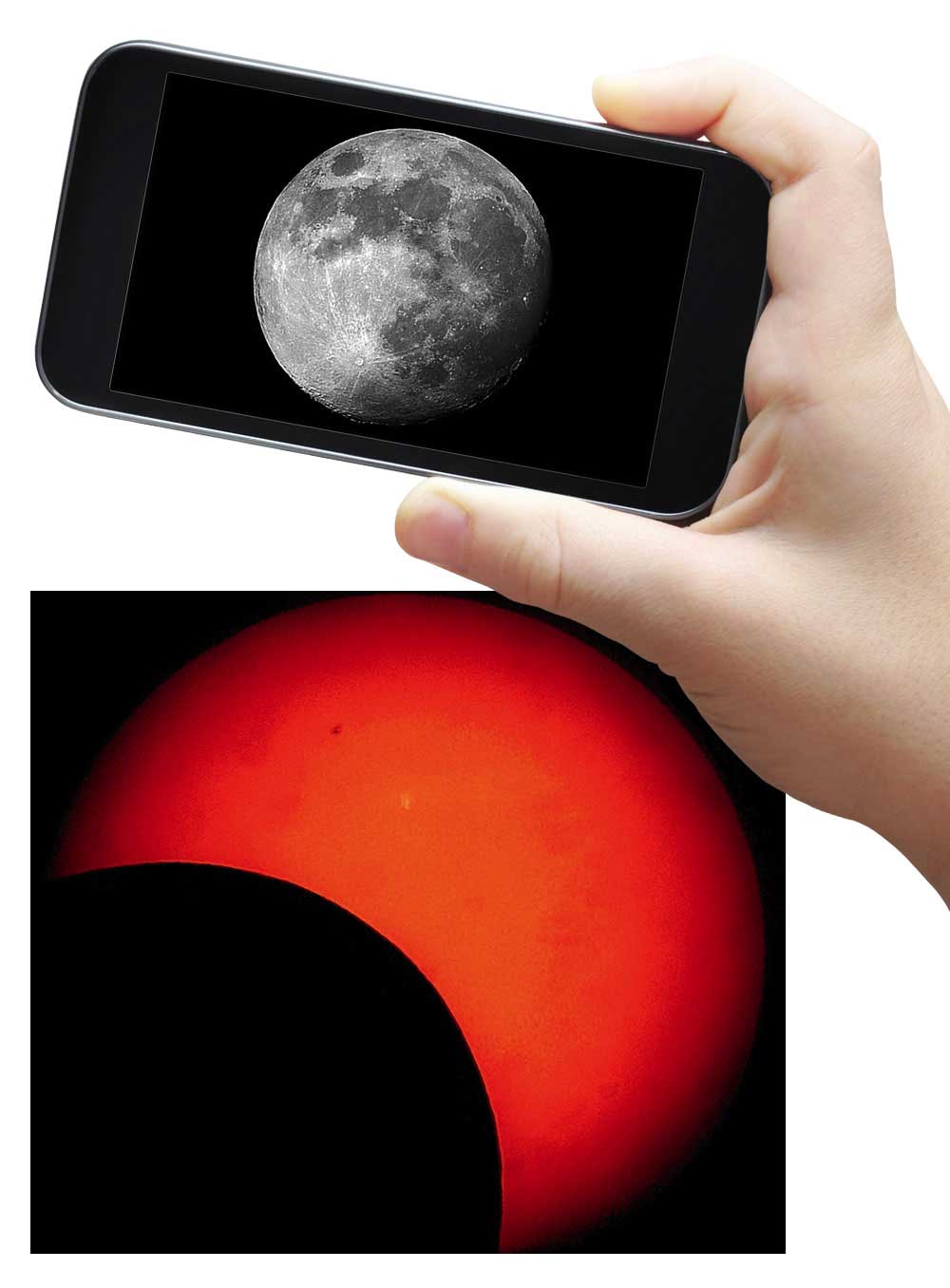Bird watchers learned early on that photographing with any digital camera and spotting scope, an activity called “digiscoping,” is a viable alternative to the usual DSLR/telephoto lens combination. More recently, amateur astronomers have found that they can acquire surprisingly good images of the Sun, Moon, and planets through cellphone digiscoping.
Less expensive than either the 35mm SLR camera astrophotography of past decades or today’s CCD astroimaging, cellphone digiscoping is no less challenging. Accurate positioning of a cellphone at the precise “sweet spot” near the eyepiece is necessary to avoid vignetting or an off-center image. It’s a task that requires extreme patience and a steady hand. Owners of digital cameras achieve exact positioning with a device called a digiscope adapter that creates the necessary camera/eyepiece connection. If you’re handy with tools, you could construct one for your cellphone. I’m a workshop klutz, but I’ve found that a cardboard tube placed over the eyepiece and positioned so that its flat-surface top is even with the plane of the “sweet spot” helps.
If you haven’t tried cellphone digiscoping, don’t wait any longer. Start with some daytime shots, experimenting with your telescope and various eyepieces to see which combination works best. You may be frustrated at first, but hang in there. I clenched my teeth, mumbled obscenities, and pulled my hair (what’s left of it) until I began to get positive results. Eventually, you’ll take some fine photos — perhaps one of that hawk perched on a telephone pole that you can show off to your bird-watching friend.
Once you feel comfortable with daytime digiscoping, it’s time to test your newfound skills on the Moon. Our lunar window of opportunity this October runs from the 18th through 29th as the Moon transitions from crescent to Full phase in the evening sky. If the Moon proves to be too bright a target (especially as Full Moon approaches), try imaging the Moon just after sunset during dusk or use a lunar filter with your eyepiece if skies are already dark. Don’t despair if you fail to have instant success. The beauty of digital astroimaging is that if your picture is a dud, you can delete it and try again.
Glenn Holland of Marina Del Rey, California, has become somewhat of an expert at this type of photography. Typically, he mates his cellphone to an 8-inch Schmidt-Cassegrain telescope and a 26mm eyepiece. Glenn has put together a nice one-minute YouTube clip that combines a slideshow of some of his best images with a pleasant musical background. For those of you who are undecided about cellphone digiscoping and need a little inspiration, it’s a must-see at http://youtu.be/s-6Mh97Y5Mk.
Glenn has submitted several cellphone astroimages of the Moon that have appeared in the pages of Astronomy and on Astronomy.com. If you’ve become as adept at cellphone digiscoping as Glenn has, why not share your images with Astronomy? Upload your pictures to our website at www.Astronomy.com/readergallery (make sure you register first). Any takers?
And while you’re testing your digiscoping skills, don’t forget that the next session of the Great World Wide Star Count takes place October 5–19. Gauge the extent of light pollution in your location by determining the magnitude of the faintest star you can see in a target constellation, and you’ll contribute valuable data to the scientific community. Find out more at www.windows2universe.org/citizen_science/starcount.
October’s lengthening nights also remind us that winter isn’t far away. Soon, mighty Orion will dominate the evening sky. What a pity that those of us who live in northerly latitudes will have to contend with snowdrifts and arctic temperatures to enjoy the wonders of that constellation! Here’s a solution brought to my attention by William Tourville of Syracuse, New York. He suggests a predawn excursion in October, when temperatures are much more tolerable and the winter constellations occupy the sky.
Questions, comments, or suggestions? Email me at gchaple@hotmail.com. Next month: 10 years at the helm! Clear skies!











